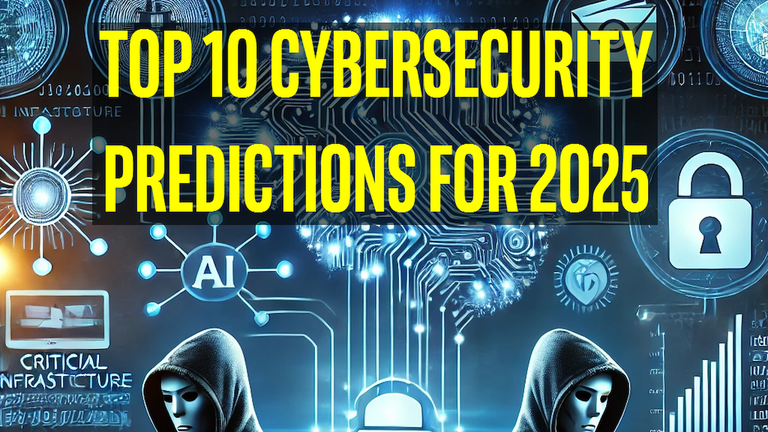
The cybersecurity landscape is poised for transformation in 2025. The rapid evolution of technology, coupled with the increasing sophistication of threat actors, presents a future that is both exciting and daunting. In this era of digital interconnectedness, understanding the potential cybersecurity challenges that lie ahead is a crucial requirement to protect it from rapidly evolving threats.
The following predictions and anti-predictions offer a glimpse into the cybersecurity realities we may face in 2025. These insights are projections based on adapting adversaries, shifting business conditions, and disruptive technologies.
The digital world is more intertwined than ever before, and the future ability to effectively protect global electronic ecosystems will be shaped by our capability to proactively understand and strategically prepare for these potential challenges and navigate the complex cyber landscape of 2025 and beyond.
Executive Summary
These 10 predictions outline how the cybersecurity landscape in 2025 will present a complex mix of challenges and opportunities. Emerging threats from nation-state actors, AI-driven cyberattacks, and a burgeoning market for software vulnerabilities will redefine how organizations perceive and manage risk. Attackers will benefit from new advantages. Critical infrastructure, financial systems, and supply chains will face elevated threats, compelling businesses to adopt proactive strategies to mitigate risks. As cybercrime grows in sophistication and scale, the need for agile and innovative defenses will become paramount.
Advancements in AI and the rise of the “Strategic CISO” will drive significant shifts in organizational priorities. While attackers will leverage AI to refine and scale their operations, defenders will deploy AI-enhanced tools to automate threat detection and response. This dual role of AI will fuel an arms race, accelerating innovation on both sides. Meanwhile, successful CISOs will move beyond technical roles to become strategic business leaders, aligning cybersecurity initiatives with business goals, fostering a culture of security, and navigating increasing regulatory demands.
To thrive in this rapidly evolving environment, organizations must prepare for tighter governance, adapt to rising stakeholder expectations, and close the cybersecurity talent gap. The growing influence of cyber insurance, stricter regulatory frameworks, and expanded AI adoption will reshape the industry. Success will depend on fostering collaboration, embracing innovation, and building resilient cybersecurity programs to address the dynamic and interconnected threats of 2025.
Prediction 1: Nation-State Actors as the Main Catalyst for Cybersecurity Evolution
In 2025, nation-state actors will remain the central driving force behind the development of aggressive cybersecurity capabilities. Their relentless investments in research and the advancement of offensive digital tools will sustain a chain reaction, intensifying cyber risks across the global landscape. These well-resourced and highly organized entities will increasingly leverage sophisticated capabilities to further their geopolitical goals, circumvent trade restrictions, and weaken rival nations’ economies. This ongoing escalation will ripple through the cybersecurity industry, compelling organizations to address growing threats while struggling to meet elevated expectations with insufficient resources.
Background and Justification
Nation-states have been at the forefront of investing billions in cyber capability innovation, fostering highly advanced offensive and defensive programs. In recent years, these actors have demonstrated an increasing willingness to engage in cyber operations with increasingly profound impacts. Their motivations — ranging from espionage and economic disruption to advancing military and foreign policy objectives — drive the development of cutting-edge tools such as zero-day vulnerabilities, modular malware, and backing aligned 3rd party advanced persistent threats (APTs).
The financial backing of nation-states enables the rapid discovery of vulnerabilities and the creation of exploits with unparalleled precision. Such innovations inevitably trickle down to the broader cybercriminal ecosystem, either through deliberate dissemination or leaks, further amplifying the risks faced by businesses, governments, and individuals. The cybersecurity community has seen a sharp rise in the scale, sophistication, and frequency of attacks, underscoring the necessity for constant vigilance and rapid adaptation.
Aggressive nation-state operations are also becoming bolder. Over the past few years, attribution has ceased to be a significant deterrent, as many governments openly or tacitly accept responsibility for cyberattacks. The international community’s inability to establish and enforce meaningful consequences has emboldened bad actors to cross previously respected boundaries. Critical infrastructure sectors — including energy, healthcare, and transportation — are now prime targets, with the potential to disrupt daily life and undermine public trust.
The increased frequency and severity of nation-state attacks elevate the expectations placed on cybersecurity professionals and organizations. Stakeholders — from governments to private entities — demand stronger and faster responses to mitigate these escalating threats. Yet, resource constraints, talent shortages, and legacy systems hinder the ability of many cybersecurity teams to meet such demands. This creates a growing gap between what is expected and what is feasible, leading to heightened stress and greater risks of failure.
Tangible Outcomes in 2025
- Increased Financial Crimes: Nation-state-driven financial theft and fraud will rise by an estimated 50%, targeting financial institutions, cryptocurrency platforms, and service-based institutions worldwide.
- Bolder Attacks with High Impact: Nation-state actors will launch more overt and less restrained attacks, focusing on critical infrastructure sectors such as governance, energy supply chains, transportation logistics, financial institutions, and healthcare systems. Impacts against critical infrastructures in the US, Western Europe, and its allies will increase by approximately 30%, disrupting daily life and public safety.
- Redefined Global Cyber Norms: The international community will face unprecedented challenges in establishing and enforcing acceptable boundaries for nation-state cyber operations. The lack of consensus and enforcement mechanisms will exacerbate tensions, fueling further escalation of cyber conflicts.
Prediction 2: The Software Vulnerability Market Grows Significantly
In 2025, the market for software vulnerabilities, particularly zero-day exploits, will experience substantial growth. Advancements in vulnerability detection tools will enhance the ability to stress, test, and deeply inspect software, driving increased discovery of exploitable weaknesses. Both open-public and private dark-web markets will thrive, making vulnerability research increasingly lucrative and attracting more researchers into the field. This surge in activity will fundamentally reshape the cybersecurity landscape.
Background and Justification
The software vulnerability market has seen consistent growth due to heightened demand for zero-day exploits and other critical vulnerabilities. Most reputable software vendors also participate in programs that leverage ethical researchers to find and report vulnerabilities. Governments, corporations, and criminal organizations actively seek these vulnerabilities to gain competitive advantages, bolster defenses, or exploit adversaries. The proliferation of bug bounty programs and specialized vulnerability marketplaces has legitimized and incentivized the hunt for software flaws, while dark-web transactions ensure a steady supply for malicious actors.
However, the definition of a “vulnerability” is evolving. Attackers are increasingly exploiting not only coding flaws but also design features and operational configurations that can be misused. Poorly conceived product designs, while technically functioning as intended, can offer attackers new avenues to compromise systems. This trend underscores the need for broader definitions and detection mechanisms.
The ability for attackers to chain vulnerabilities together into sophisticated attack sequences will significantly elevate the overall risk and impact of these exploits. As more vulnerabilities are discovered and shared within criminal networks, attackers will combine them to bypass layered defenses and achieve highly targeted and damaging outcomes. This compounding effect will further stress security teams and demand new defensive strategies.
Additionally, advancements in generative AI (GenAI) are poised to revolutionize vulnerability research. AI-driven systems, trained to analyze and stress-test software, will dramatically accelerate the discovery of flaws. This will empower both defenders and attackers, raising the stakes in the cybersecurity arms race.
The expected increase in vulnerability discoveries will elevate pressure on organizations to patch systems promptly and re-evaluate their software development lifecycles. Security teams will need to adapt to a more dynamic and demanding threat landscape, where the cost of delayed responses can be catastrophic.
Tangible Outcomes in 2025
- Staggering Growth in Discovered Vulnerabilities: The number of identified vulnerabilities will surge by an estimated 30% to 50% due to improved tools and expanded research efforts.
- Expanded Bug Bounty Programs: Organizations will broaden their bug bounty initiatives to include not only coding weaknesses but also exploitable design features and operational use-cases.
- Emergence of GenAI Vulnerability Detection Systems: Dedicated AI models will be developed to specialize in identifying software vulnerabilities, revolutionizing the speed and efficiency of the discovery process.
Prediction 3: Cybercriminals Leverage AI to Scale and Refine Fraud Schemes
In 2025, cybercriminals will harness AI tools, social media platforms, and data from past breaches to significantly increase the realism, scale, and effectiveness of their fraud schemes. These advancements will enable the development and deployment of highly personalized and convincing attacks, giving cybercriminals a clear advantage. As security tools struggle to keep pace, attackers will exploit their technological lead to launch more extensive and profitable operations.
Background and Justification
Cybercriminals have historically relied on manual techniques and traditional tools to execute scams and frauds. However, the integration of AI technologies is transforming the digital landscape. Generative AI and machine learning models can analyze vast amounts of stolen data from previous breaches, enabling attackers to craft highly targeted social engineering campaigns, such as phishing and business email compromise (BEC) schemes. These AI-driven attacks can mimic human behavior with remarkable accuracy, making them harder to detect and resist.
Social media platforms play a pivotal role by providing attackers with an abundance of publicly available personal information. AI tools can analyze these datasets to uncover details about potential victims, allowing fraudsters to tailor their approaches. This combination of AI and social media intelligence will lead to an increase in both the success rates and scale of cybercrime operations.
The exploitation of past data breaches further amplifies this trend. Cybercriminals use breach data to create detailed profiles of victims, including passwords, financial information, and personal identifiers. When combined with AI’s ability to automate and refine attacks, this wealth of information enables increasingly sophisticated and convincing schemes.
Moreover, the growing availability of vulnerabilities and exploits allows cybercriminals to develop more effective methods for breaching systems and conducting fraud at scale. This leads to more elaborate attack chains that can bypass traditional security controls and inflict significant financial and reputational damage.
AI systems will also incorporate feedback loops, learning from failed attempts to continually refine their tactics and improve success rates. This iterative process will result in increasingly sophisticated and adaptive fraud schemes, further challenging defenders.
Attacks will continue through traditional portals such as email, social media platforms, and text messages but will also expand significantly into cloud service environments, taking advantage of inherent trust by users. Collaboration applications, meeting tools, and developer portals will become prominent new targets for exploitation, widening the threat landscape and exposing critical workflows to new vulnerabilities.
Tangible Outcomes in 2025
- Significant Increase in Cybercrime Attacks: The overall volume of cybercrime attacks will rise by an estimated 30%, driven by AI-enabled fraud schemes.
- Improved Success Rates for Fraudsters: The use of AI and personalized data will enhance the effectiveness of cyberattacks, increasing successful victimization by approximately 15%.
- Shift Toward Larger Targets: Organized cybercriminal groups will focus on high-value victims, demanding larger ransoms and causing greater financial and operational disruptions. Ransomware will solidify its position as the most prevalent and severe threat in the fraud sector.
- Attacks Conducted Via Cloud Service Environments: Fraud schemes expand from connecting to victims via email, social media, and text messaging, to now include common collaboration apps, meeting tools, and developer portals.
Prediction 4: Greater Overall Impacts and Losses
In 2025, the cybersecurity landscape will see a sharp rise in overall impacts and losses. This escalation will be driven by several factors: increased research into attack vectors, a growing pool of skilled professional attackers, the availability of advanced tools, and an ever-expanding array of vulnerabilities. These factors will culminate in a dramatically more dangerous cyber environment with far-reaching consequences across both public and private sectors. Critical infrastructure will remain a prized target, supply chain attacks will become more effective despite a moderate increase in frequency, and nation-state cybercriminals will set their sights on digital assets like cryptocurrency. The combined effect of these threats will not only increase the frequency of attacks but will also magnify the severity of their consequences.
Background and Justification
Critical infrastructure will continue to be a primary target for highly capable attackers in 2025. Energy, transportation, communications, logistics, finance, and healthcare sectors will face increasing risk as attackers hone their skills and techniques. These sectors, already under frequent assault, are vulnerable not only due to their value but also because of the cascading societal effects. A disruption in energy or healthcare systems, for example, can have immediate and devastating consequences for ordinary citizens, from power outages to life-threatening delays in medical care. As adversaries refine their tools and tactics, attacks on these sectors will become more precise and impactful, putting critical services at a heightened risk of interruption and exploitation.
Supply chain attacks will also see a rise in effectiveness, if not volume. While the number of supply chain attacks will increase by just 10%-15%, their effectiveness will be far more pronounced. In the past, attackers have used vendors as entry points into larger targets, but in 2025, these follow-up attacks will become more damaging and impactful, not only to individual organizations but to entire sectors. This will result in 30%-40% more victims or damage compared to previous years. Organizations that previously viewed their suppliers as peripheral risks will be forced to reevaluate their cybersecurity postures, as a single compromised vendor could trigger catastrophic consequences for multiple downstream partners.
Furthermore, nation-state cybercriminals will take aim at cryptocurrency exchanges, wallets, and other related digital tools. With digital currencies continuing to rise in value, these platforms will become prime targets for theft. Nation-states with advanced cyber capabilities will dedicate resources to stealing digital assets, possibly resulting in losses exceeding $2 billion. With little regulation and high-value targets, cryptocurrency exchanges will be forced to reevaluate their security measures, and consumers will likely face even greater risks of losing digital assets to cybercrime.
The overall rise in theft and fraud will be one of the most alarming trends of 2025. The convergence of traditional cybercriminals, data miners, and nation-state-backed actors will drive a significant increase in financial crime. Cybercriminals will continue to refine their tactics, shifting to highly sophisticated methods for stealing sensitive data, committing fraud, and exploiting new vulnerabilities. Whether targeting individuals, businesses, or government agencies, these attackers will push the limits of current defenses. As a result, theft and fraud losses could see an increase of 30%-60% compared to previous years. This surge will place significant pressure on organizations to adopt new and more proactive defenses to safeguard against an ever-evolving threat landscape.
The implications of these threats are profound and far-reaching. With the increasing sophistication and effectiveness of attackers, organizations and governments will need to take decisive actions to mitigate risks. Key areas of focus will include improving incident response capabilities, enhancing supply chain security, strengthening the protection of critical infrastructure, and implementing more robust fraud detection systems.
Tangible Outcomes in 2025
- Critical Infrastructure targeted: A significant rise in cyberattacks on critical infrastructure, specifically from aggressive nation states, with increased public awareness of disruptions to essential services.
- Cryptocurrency under attack: Cryptocurrency exchanges, wallet software, and related digital platforms will face targeted attacks by nation-state cybercriminals, potentially resulting in thefts exceeding $2 billion in digital assets.
- Supply Chain attacks will increase: Supply Chain based attacks will rise by 10%-15%, with a 30%-40% rise in the overall number of victims or the extent of damage caused by these attacks.
- Cybercrime Increases: Theft and fraud losses will increase by approximately 30%-60% compared to previous years, driven by a combination of cybercriminals, data miners, and nation-state-backed actors.
Prediction 5: Rising Expectations — The Growing Importance and Reliance on Digital Technology
As our dependence on digital technology continues to expand in 2025, the visibility and consequences of cyberattacks will grow significantly, leading to rising expectations across various stakeholders. The greater importance of digital infrastructure, services, and data in both business and daily life will drive this shift. In response to increasingly sophisticated threats, demands for stronger cybersecurity will intensify from all directions: consumers, partners, third-party vendors, regulators, auditors, C-suite executives, and boards alike. As cybersecurity incidents become more frequent and impactful, the pressure on organizations to meet these heightened expectations will reach a boiling point. Key drivers of this change will include the evolving role of cyber insurance and the growing capabilities of attackers, which together will reshape how cybersecurity is viewed and managed within organizations. The ability of cybersecurity leadership will be paramount in overcoming these challenges.
Background and Justification
The influence of cyber insurance will be a major force in the landscape of cybersecurity in 2025. In an effort to manage rising risks, cyber insurance providers will play a significant role in shaping corporate cybersecurity strategies. As incidents become more frequent and impactful, these providers will rely on fear-driven metrics, using the severity and frequency of attacks to justify premium hikes. Insurers will push for the adoption of minimum standards for cybersecurity controls, mandating organizations to implement specific protections to secure coverage. This move is likely to result in companies facing additional pressure not only to improve their security posture but also to navigate the complex landscape of insurance compliance. Cyber insurance, once seen as a safety net, will increasingly become a driving factor in pushing organizations toward meeting more stringent cybersecurity standards.
As attacker capabilities continue to improve, the scale and sophistication of cyber incidents will lead to a rise in consumer and stakeholder expectations. In 2025, the effects of these escalating threats will ripple through various sectors as individuals and organizations demand more robust protection from the growing tide of cybercrime. Consumers will expect greater transparency, data protection, and organizational responsiveness. Partners and third-party vendors will impose stricter cybersecurity requirements on each other to mitigate collective risk. Regulators and auditors will increase pressure for compliance with evolving cybersecurity laws, while C-suite executives and boards will become more vocal in demanding comprehensive, proactive strategies to address cybersecurity vulnerabilities.
This shift will redefine the conversation from reactive to proactive, as organizations will be expected to demonstrate a culture of security that is deeply embedded in their operations, rather than simply responding to threats after the fact.
The convergence of the growing influence of cyber insurance and the increasing capabilities of cyber attackers will create a high-pressure environment for cybersecurity leaders. With rising premiums and the need to meet evolving minimum security standards on one side, and greater expectations from internal and external stakeholders on the other, cybersecurity leaders will find themselves squeezed by these competing forces with insufficient resources. Organizations will be faced with the choice of adapting to these new pressures, which will likely require a significant shift in strategy, or risk having their long-term support from both leadership and stakeholders erode. Failing to meet these expectations could result in reputational damage, financial loss, and diminished trust in the organization’s ability to protect critical assets. The challenge will be navigating these demands while managing the complex, evolving threat landscape.
Tangible Outcomes in 2025
- Cyber insurance will field several new methodologies: Insurance will employ new metrics for measuring cyber risk which will justify rising premiums. Providers will increasingly require organizations to meet specific cybersecurity standards and oversight to secure coverage.
- Expectations rise for cybersecurity: Stakeholder expectations, including those from consumers, partners, vendors, boards, and regulators, will shift dramatically toward more proactive cybersecurity measures, including stronger data protection practices and incident response readiness.
- Stressing cybersecurity: Leaders will face increased pressure to adapt to new requirements or face the risk of losing support from key stakeholders, resulting in a potential erosion of the organization’s cybersecurity infrastructure and reputation.
Prediction 6: The Rise of the Strategic CISO
In 2025, the most successful Chief Information Security Officers (CISOs) will distinguish themselves not by technical acumen alone but through their ability to effectively communicate security value, align cybersecurity strategies with business goals, and optimize limited resources. As organizations face escalating cyber risks and stakeholder expectations, the demand for CISOs and skilled cybersecurity engineers will surge by mid-year. However, it will be the CISO’s soft skills — communication, collaboration, and culture-building — that ultimately define success in this increasingly strategic business role.
Background and Justification
The evolving threat landscape and growing reliance on digital infrastructure are driving a paradigm shift in cybersecurity leadership. CISOs must bridge the gap between technical operations and executive decision-making, ensuring that cybersecurity efforts support business objectives without impeding growth or innovation. Boards and C-suite executives are no longer content with technical jargon — they seek clear, actionable insights and evidence of return on security investments.
To meet these rising demands, CISOs must excel at communicating the value of cybersecurity in terms of risk reduction, regulatory compliance, business continuity, and competitive advantage. Effective collaboration with internal departments, external partners, regulators, auditors, and third-party vendors will also be crucial, as cybersecurity increasingly permeates every facet of the organization.
Moreover, fostering a strong culture of security will become a priority. Employees at all levels need to understand their role in protecting the organization. CISOs who can inspire trust, champion security awareness, and promote accountability will drive a significant reduction in human-related vulnerabilities. These leadership qualities will overshadow purely technical skills, which are now table stakes for entry into the profession.
Tangible Outcomes in 2025
- Talent demands rise: A marked increase in demand for CISOs and cybersecurity engineers by mid-year, driven by higher expectations for strategic leadership.
- Broader skills sought: A shift in CISO hiring criteria, with greater emphasis on soft skills like communication, collaboration, and cultural leadership.
- Growth of “strategic CISOs”: Organizations that invest in leadership development for CISOs will see improved alignment between cybersecurity strategies and business goals, resulting in measurable gains in both security posture and operational efficiency.
Prediction 7: Governance, Regulations, and Compliance Tighten the Grip
In 2025, governments across the globe will play an increasingly assertive role in shaping the cybersecurity landscape, introducing more complex and overlapping regulations that organizations must navigate. Regulatory frameworks will expand, targeting technology controls, banning specific vendors and technologies, and even mandating government access to certain products. This heightened governance will aim to mitigate national security risks but will place significant operational and compliance burdens on businesses.
Background and Justification
As cyber threats evolve, evidence will continue to surface that certain nations have coerced technology vendors into embedding secret backdoors, surveillance tools, and loaders into their products. This will deepen geopolitical tensions, prompting governments to ban foreign technology and restrict international data traffic to reduce exposure to potential compromise. Such measures will lead to greater fragmentation in the global technology market, with companies required to align their products with varied and sometimes conflicting regional regulations.
The maturing of regulatory enforcement will increase liability and litigation risks for organizations. Specific penalties for non-compliance with cybersecurity laws, such as GDPR, CCPA, EU AI Act, and emerging national standards, will become more common. Boards and executive leadership will face greater accountability, legal disputes over data breaches, product compromises, and privacy violations will intensify, resulting in higher financial and reputational stakes for non-compliant organizations.
Additionally, regulations governing artificial intelligence (AI) will expand to address cybersecurity and privacy concerns, adding new layers of responsibility for organizations deploying AI-driven technologies. Governments will mandate robust controls to secure AI systems and prevent their exploitation by malicious actors, forcing organizations to integrate cybersecurity into their AI governance frameworks.
Tangible Outcomes in 2025
- Technology restrictions: A growing number of bans on foreign technology vendors and restrictions on international data flows to mitigate security risks.
- Regulation enforcements: Increased enforcement of cybersecurity regulations, leading to significant penalties for non-compliance and heightened litigation risks.
- AI regulations address security: AI regulations explicitly incorporate cybersecurity and privacy mandates, broadening the scope of governance and compliance requirements for businesses.
Prediction 8: Cybersecurity Staffing Chasm Begins to Close
In 2025, the long-standing gap between the high demand for skilled cybersecurity professionals and the underutilized pool of entry-level workers will begin to narrow. Employers will move away from unrealistic expectations of hiring “superstars” who can handle multiple roles simultaneously. Instead, they will recognize the need for a balanced approach: strong leadership, clearly defined roles, and the inclusion of entry-level talent. This shift will help organizations build sustainable frameworks that foster upskilling, career progression, and a more broadly skilled workforce.
Background and Justification
For years, the cybersecurity industry has struggled with a workforce paradox: hundreds of thousands of open positions requiring seasoned professionals and an equally large number of entry-level job seekers struggling to gain experience. A poor understanding of cybersecurity and unrealistic job requisites have perpetuated this divide, leading to critical staffing shortages even as demand for cybersecurity continues to rise.
In 2025, employers will begin in earnest to refine their hiring strategies, emphasizing clear expectations for each role and exploring variable talent pipelines. Cross-pollination from adjacent domains, like IT and engineering, as well as entry-level workers will increasingly be integrated into cybersecurity teams, supported by robust training, upskilling, and mentoring programs. This will not only address staffing gaps but also ensure a steady flow of skilled professionals to meet future demand.
As cybersecurity becomes more visible and strategically important, the role of the Chief Information Security Officer (CISO) will continue to evolve. The misconception of CISOs as purely technical leaders is being replaced by recognition of their contributions to corporate enablement, competitive advantage, and risk management. Consequently, many organizations will elevate the CISO’s reporting structure, shifting them from under the CIO, CRO, or product groups to a peer position in the C-suite, and in some cases reporting directly to the CEO.
This evolution will help bridge the cybersecurity talent gap, enabling organizations to build resilient and adaptable teams to meet the challenges of an ever-evolving threat landscape.
Tangible Outcomes in 2025
- Building staffing channels: Increased hiring for leadership and technical cybersecurity roles, with a focus on sustainable growth and inclusion of entry-level talent.
- Clear and reasonable job roles: More realistic job requisitions, better training programs, and opportunities for continuing education, enabling smoother entry and career progression in cybersecurity.
- Rising visibility of cybersecurity organization: A continued shift in the CISO reporting structure, with more CISOs elevated to C-suite roles, reflecting their strategic value within organizations.
Prediction 9: Dual Role of AI in Cybersecurity — Attack and Defense
In 2025, artificial intelligence (AI) will prove its value in cybersecurity, marking the beginning of an AI-driven arms race between attackers and defenders. Both sides will harness AI for practical gains, with attackers initially winning the upper hand by being the first to leverage AI technologies to scale and improve their operational outcomes. By mid-year, however, defenders will begin to deploy robust AI-driven tools to counter or compensate against these threats, and change the dynamics of cybersecurity.
Background and Justification
Attackers will capitalize on AI to enhance their capabilities in areas such as social engineering, vulnerability detection, and exploit development. AI-powered social engineering will enable more personalized and convincing phishing attacks, while vulnerability detection tools will automate the identification of exploitable weaknesses. Attackers will also use AI to improve their reconnaissance efforts, analyzing environments, selecting targets, and generating custom and complex exploits at unprecedented speed. These advancements will allow attackers to scale their operations, broadening their reach, effectiveness, and impact.
On the defensive side, AI will be integrated into various cybersecurity processes to detect, analyze, and respond to threats more effectively. Security Operations Centers (SOC) will use AI to automate Level-1 tasks, including triaging alerts, identifying anomalies in telemetry data, and correlating threat intelligence. AI will also enhance user awareness and behavioral training by delivering tailored content which is relevant to audiences, and real-time feedback. Other areas, such as data classification, audit processes, and even cybersecurity sales and marketing, will benefit from AI’s capabilities.
By the latter half of 2025, AI-driven defensive tools will begin to address many of the attackers’ initial advantages. Effectiveness will be basic in the beginning and the maturity will quickly grow over time. These defensive tools represent the initial foundations of AI in cybersecurity and are an essential step forward for the industry.
Tangible Outcomes in 2025
- Attacks scale with AI: Attackers will leverage AI to significantly improve social engineering, vulnerability detection, and exploit development, leading to more targeted and scalable attacks. Major hacking tools, frameworks, and services will incorporate AI functions.
- Defenders respond with AI: SOCs will increasingly use AI for automating Level-1 tasks, anomaly detection, and threat correlation, enabling faster and more accurate responses. All major Security Information & Event Management (SIEM) and Security Orchestration, Automation, & Response (SOAR) vendors will promote AI features.
- AI trains users to be secure: AI-driven awareness and training programs will enhance user defenses against social engineering attacks. All major security awareness and training tools will be promoting AI features
- Escalating AI in cybersecurity: 2025 is the year the AI arms race between attackers and defenders begins in earnest. It will accelerate and drive rapid innovation in AI-based cybersecurity tools and strategies.
Prediction 10: AI Adoption Expands Security Boundaries and Data Protection Challenges
The adoption of AI tools in 2025 will fundamentally transform cybersecurity, expanding its scope to protect a vastly increased volume of data and interconnected systems. The scale and complexity of data requiring protection will increase dramatically as AI generates, aggregates, and shares vast amounts of new information across organizational and third-party environments. AI solutions will also circumvent traditional security boundaries as they integrate across diverse data repositories, networks, and audiences, creating new challenges for protecting systems and sensitive information.
Background and Justification
AI systems require vast amounts of data to learn and generate incredible quantities of information when operated. The production and dissemination of massive amounts of derived data, much of which will be sensitive, will require rigorous protection.
Existing data security frameworks, built for relatively static and compartmentalized datasets, will struggle to scale and adapt to these new demands. Organizations will face a growing need to classify, secure, and monitor data that flows dynamically between internal departments and external partners. Without robust cybersecurity oversight, this data could become an attractive target for attackers seeking to exploit AI-driven ecosystems.
As an example, AI-powered customer engagement systems will provide more responsive, effective, and empathetic experiences. By the end of Q2 2025, these systems will surpass human agents in handling customer needs, resolving issues efficiently, and fostering loyalty. However, their effectiveness will hinge on access to large datasets spanning various departments, including customer profiles, transactional history, and behavioral patterns. This expanded data flow will challenge traditional security models designed to safeguard data within defined boundaries by specifically authorized and accountable individuals.
The shift in data volume, distribution, and authorization complexity will force cybersecurity teams to rethink their strategies. Traditional perimeter-based security approaches will give way to more adaptive, context-aware models, emphasizing data classification, encryption, auditability, and real-time monitoring. Cybersecurity leaders will also need to collaborate closely with AI developers to ensure security measures are integrated into AI systems from inception.
The very adoption of AI solutions will redefine cybersecurity’s role, requiring innovation to protect data and systems in an increasingly interconnected and AI-driven world.
Tangible Outcomes in 2025
- Rise of AI Customer Support: By mid-2025, AI-driven customer engagement systems will outperform human agents in responsiveness, issue resolution, and empathetic interactions thus requiring access to and protection of vast customer datasets.
- AI Data Explosion: The volume of data generated, aggregated, and shared by AI systems will grow exponentially, challenging traditional data security paradigms.
- AI Causes Data Breaches: Organizations will face heightened risks of data breaches and system manipulations due to the increased interconnectivity of AI systems, necessitating enhanced data classification, encryption, and oversight mechanisms.
- AI Begins to Embrace Cybersecurity: Cybersecurity strategies will evolve to focus on securing dynamic data flows, collaborating with AI developers, and adopting more adaptive security frameworks.
Anti-Predictions
Fears often run rampant in cybersecurity. I hear the rumors and watch the swirls of people debating interesting vectors which create unnecessary distractions. So, in addition to predicting what will happen in 2025, I believe it is also important to dispel fears by calling out what will not happen.
Here are some of the burning cybersecurity concerns of 2025 that we don’t need to worry about, just yet anyways:
1. Behavioral security does not die. The dissatisfaction with ineffective employee training programs will not be the cause of ending such initiatives. In fact, the reverse occurs with better training, gamification, cognitive security, and positive reinforcement methods that reach the market and turn susceptible humans into better protective assets.
2. The CISO role does not end. The belief that the death of the CISO role will occur is premature. CISOs will continually adapt, as they always have, with their scope of responsibilities growing, not shrinking.
3. Quantum fears won’t materialize in 2025. There will be increasing talk about quantum, with many technology advancements increasing in momentum, but the industry is still a couple of years from nearing the pinnacle where quantum capabilities will undermine modern encryption in a practical way.
Conclusion
The cybersecurity challenges of 2025 will demand a heightened focus on understanding and addressing the most pressing threats, shifting business challenges, and impacts of disruptive technology. From the growing sophistication of nation-state actors and AI-driven cyberattacks to the expanding market for software vulnerabilities, the risks to critical infrastructure, financial systems, and supply chains will escalate.
Anticipating these developments is vital for organizations to safeguard operations, protect public trust, and minimize widespread disruptions. By gaining insight into these evolving threats, cybersecurity professionals can proactively prepare, adopting advanced technologies and strategies to enhance resilience, optimize capabilities, and minimize risks. By acting now to address the most critical risks, the cybersecurity community can build a more secure and resilient digital ecosystem, ensuring readiness for the increasingly complex threats of 2025.
Matthew Rosenquist — CISO, Cybersecurity Strategist, & Industry Advisor — Cybersecurity Insights.
Follow on LinkedIn and subscribe to the Cybersecurity Insights channel for more news, analysis, and discussions.
Sponsors and Supporters of the 2025 Cybersecurity Predictions
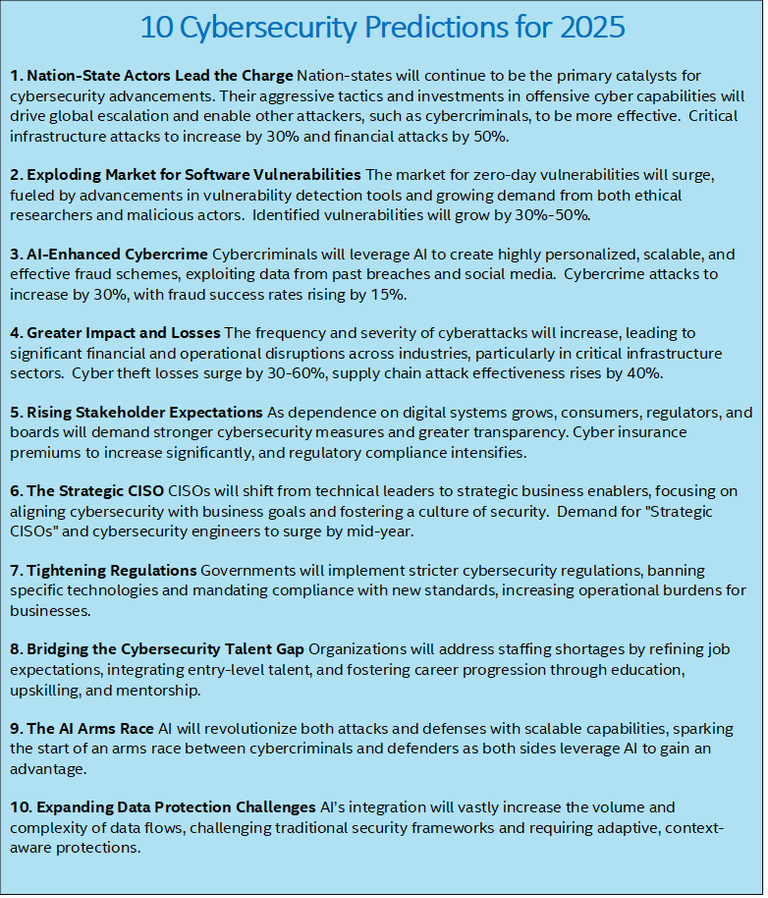
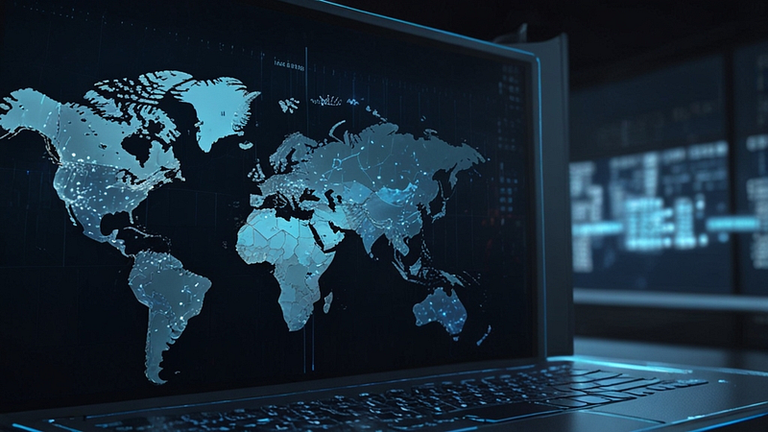

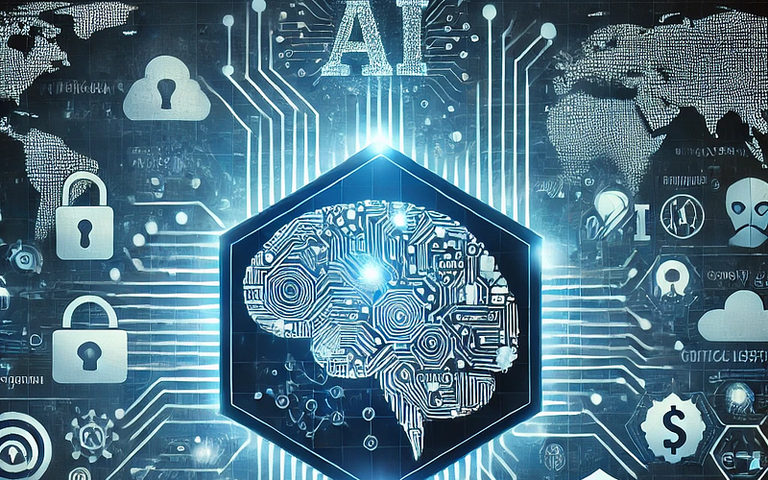
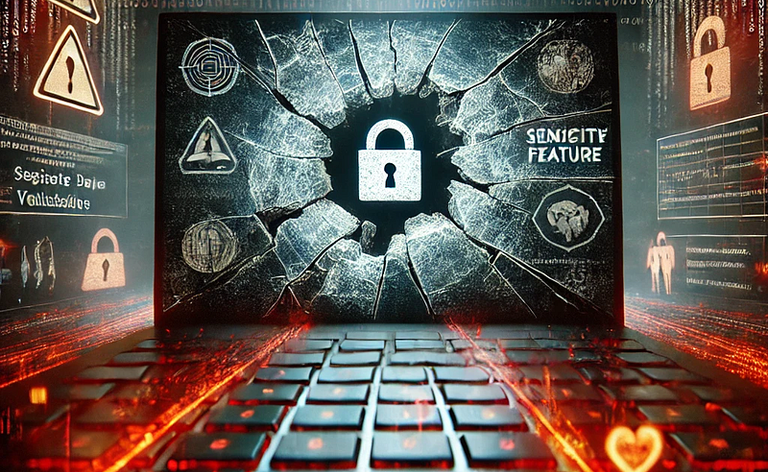
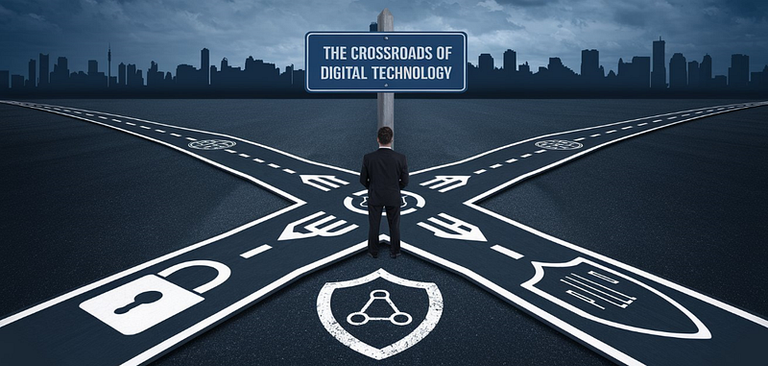


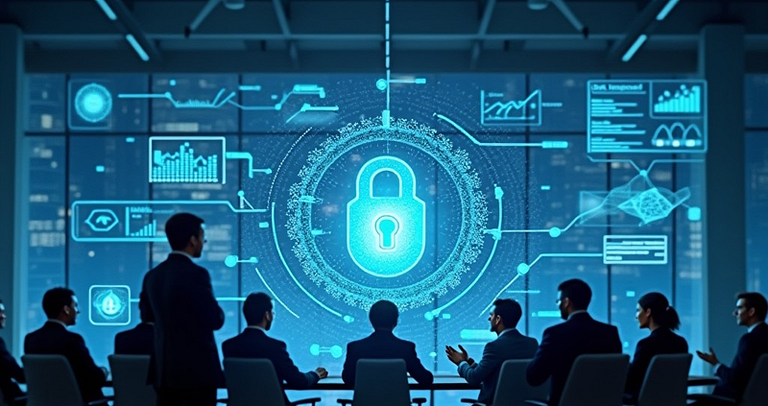

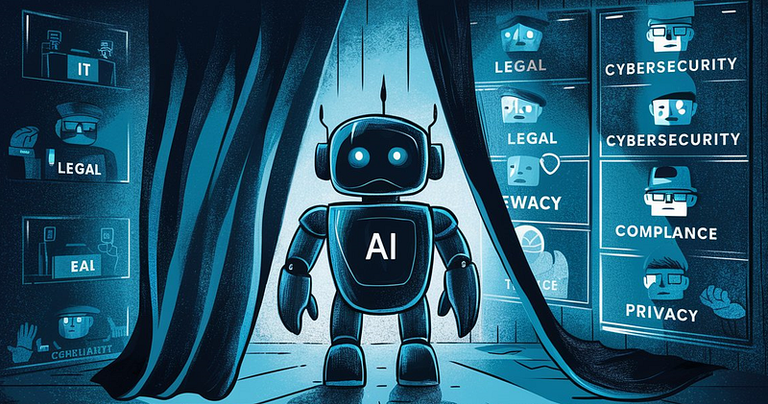
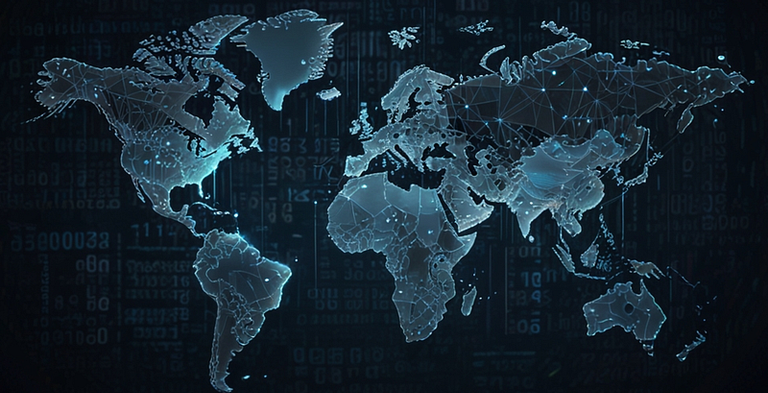

Nicely done and very comprehensive. 2025 is going to be trouble!